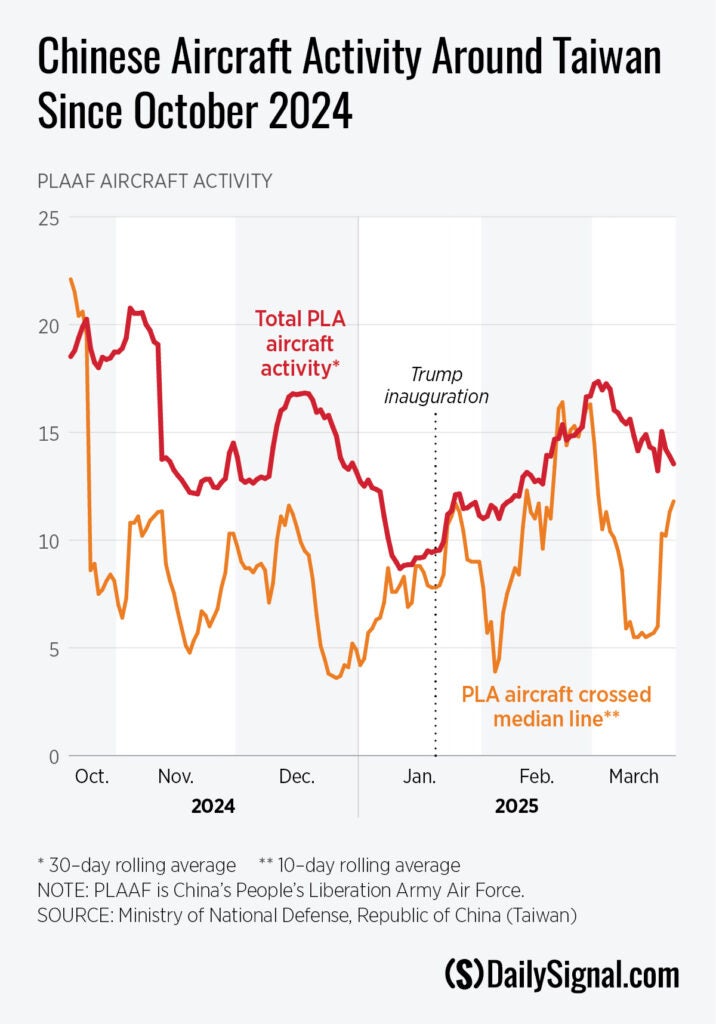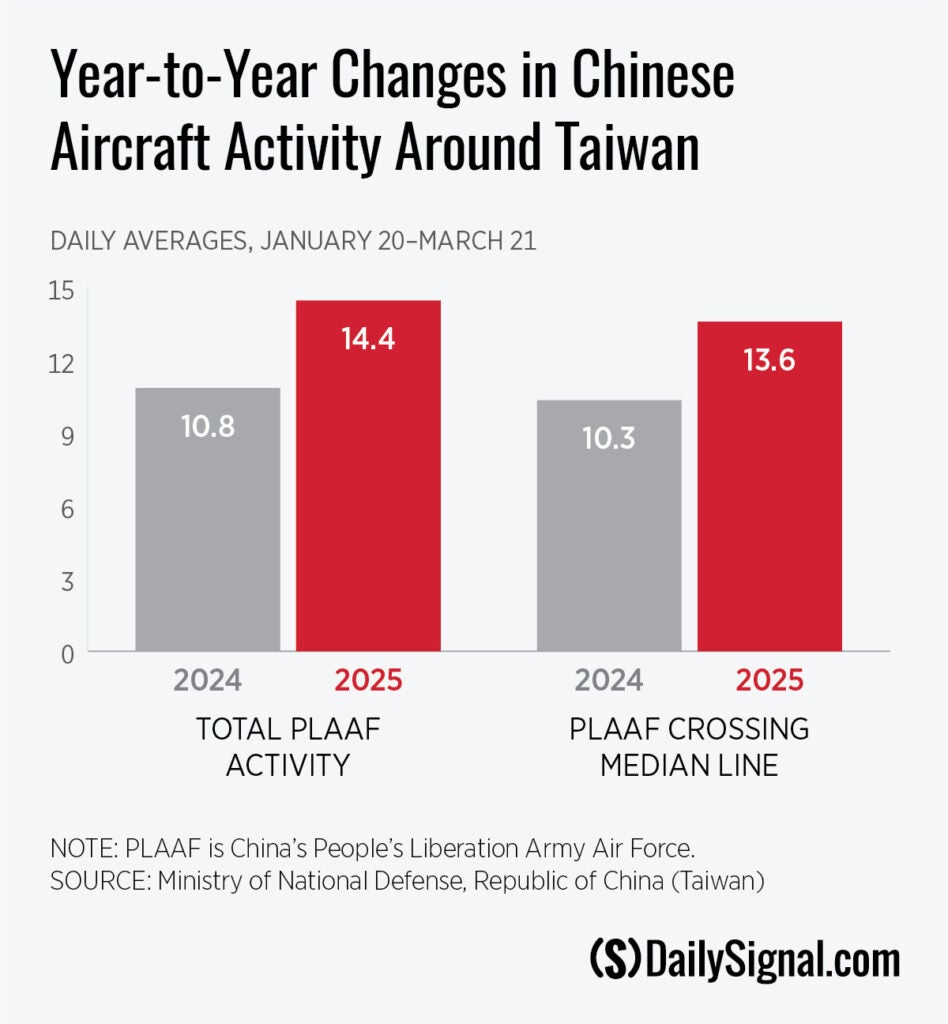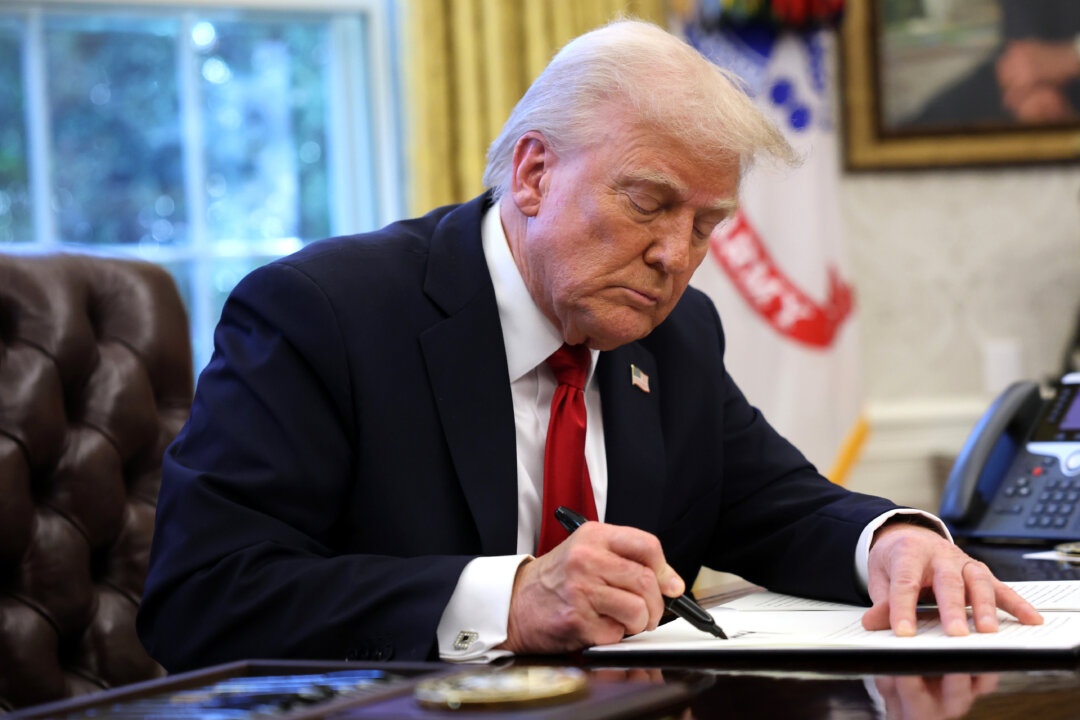In the days around the U.S. presidential election, dozens of People’s Liberation Army warplanes cruised through Taiwanese airspace. Such behavior is a microcosm of China’s audacity and confidence to act with increasing impunity.
During Biden’s tenure, the Chinese military consistently probed Taiwan’s readiness and Washington’s leadership. Data from the Taiwanese Ministry of Defense indicates Chinese activity around Taiwan has spiked by over thirty percent compared to the same period last year, potentially a calculated jab to see how Trump 2.0 will respond to cross-strait antagonism.

As 2024 came to an end, the Communist Chinese turned up the heat on Taiwan, flexing their muscles whenever opportunities arose. On October 15th, China’s Joint Sword 2024B exercise saw 111 aircraft cross the Taiwan Strait’s median line—a record high. In December, coinciding with President Lai Ching-te’s return from a visit to the U.S., naval activity surged again. Between December 9-11, over 90 warships and dozens of aircraft were detected around the island nation.
In recent weeks, the People’s Liberation Army has returned to sending provocative signals. As typical, China’s military activities ebb and flow to send specific strategic messages or in reaction to perceived provocations, such as when the USS Ralph Johnson and USNS Bowditch transited the Taiwan Strait earlier this year. That operation triggered an abnormally intense response for early February—30 Chinese aircraft detected in Taiwan’s northern, southwestern, and eastern air defense identification zones in a single day. By comparison, the last transit of the Taiwan Strait by a U.S. Navy vessel, the USS Higgins on October 21, 2024, saw China deploy only 14 aircraft in response. Unlike the situation under the Biden administration, Beijing recognizes Trump 2.0’s focus on it hinders China absorbing Taiwan on a timeline of their choosing.
Moreover, shortly after Chinese Lunar New Year celebrations wrapped up, the Chinese military conducted unannounced live-fire drills on February 27—unprecedented for that time of year when operational levels are typically lower and during less-than-ideal weather. The drills spanned from 40 nautical miles off Taiwan’s coast to the Tasman Sea between Australia and New Zealand, fomenting some consternation in Canberra and Wellington.
By mid-March, the 10-day average of median line crossings by Chinese aircraft showed a significant rise, almost doubling from 6 on March 17 to 11.8 by March 21—largely attributable to one day’s spike in activity on March 18.
Chinese Ministry of Foreign Affairs spokesperson Guo Jiakun explained the activity by citing a recent change to a State Department fact sheet eliminated language opposing Taiwan’s independence, stating “this is yet another example of the United States’ stubborn adherence to the erroneous policy of using Taiwan to suppress China.” The surprise drills in February and March produced unexpected spikes in activity, indicating that even under Trump, China is still keen on testing boundaries.

To better ascertain China’s evolving military strategy and intent, the U.S. must leverage its forward-looking approach to intelligence, surveillance, and reconnaissance. In February, Admiral Samuel Paparo, commander of U.S. Indo-Pacific Command warned that China’s heightened activity near Taiwan was in fact rehearsals for an attempt at forced reunification. This activity aims to desensitize Taiwan and its partners through sustained high military presence and grey-zone tactics that obfuscate preparations for kinetic conflict.
Project Overmatch, the Navy’s contribution in the Joint All-Domain Command and Control initiative, is accelerating anticipated development timelines, arming the Navy with artificial intelligence and advanced drone technology. That said, a potential demonstration of the return on investment here could become available with spring exercises coming in the Pacific. With this mind, the fielding of operationally useful mass data analytics and AI-assisted decision-making systems can be achieved in part by emulating Task Force 59’s success in the Arabian Gulf.
There, autonomous vehicles and associated information networks served as the connective tissue between machines and manned vessels, enabling a wider and persistent sensor coverage previously unseen, which could soon be made lethal as demonstrated in November’s Digital Talon exercise. The drills showcased Central Command’s prowess in testing aerial autonomous launches and recoveries, as well as identified challenges for the group dubbed ‘the pioneers’ to overcome in the future.
In the Pacific, this approach could give the U.S. a critical edge in countering China’s tactics and deter aggression. The private sector has matched this movement toward activity-based intelligence. Predictive models and sensors suites from companies like Windward track anomalous behavior using automated information systems, capable of subverting bad actors who seek to conceal their identities while at sea.
Data streams from platforms such as Northrop Grumman’s Manta Ray could create a sensor-heavy ecosystem capable of identifying, tracking and predicting targeted activities like dark ships involved in sanctions avoidance, Chinese maritime militia activities, illicit narcotics trafficking at-sea, and clandestine operations all in near real-time.
China is now seeking to check America’s—and Trump’s—response to its intimidation of Taiwan. Lawmakers must act without delay to equip the Indo-Pacific Command with the resources to field the appropriate technologies to pace rising Chinese provocations.
Done well, perhaps the next time China or Russia seeks to snip undersea cables in Asia or harass partners in the region, by detecting anomalous or illicit activities through cutting-edge monitoring, the United States could better position forces to preempt such moves before they become a confrontation at-sea. To achieve this, our naval forces must have robust maritime domain awareness necessary to stay one step ahead.
The post Peace Through Technological Strength: How Trump’s America Tames the Chinese Dragon appeared first on The Daily Signal.
.png)














 English (US)
English (US)